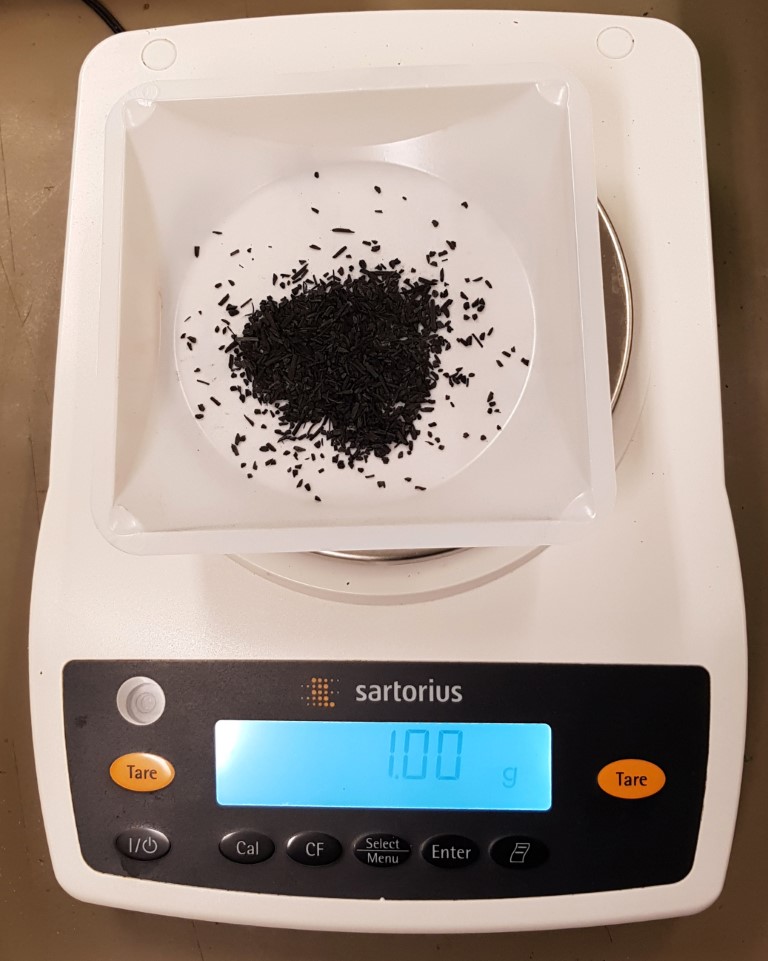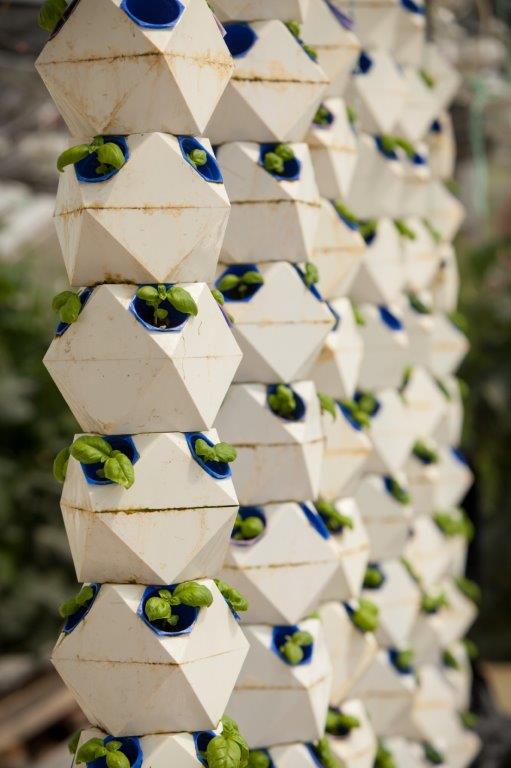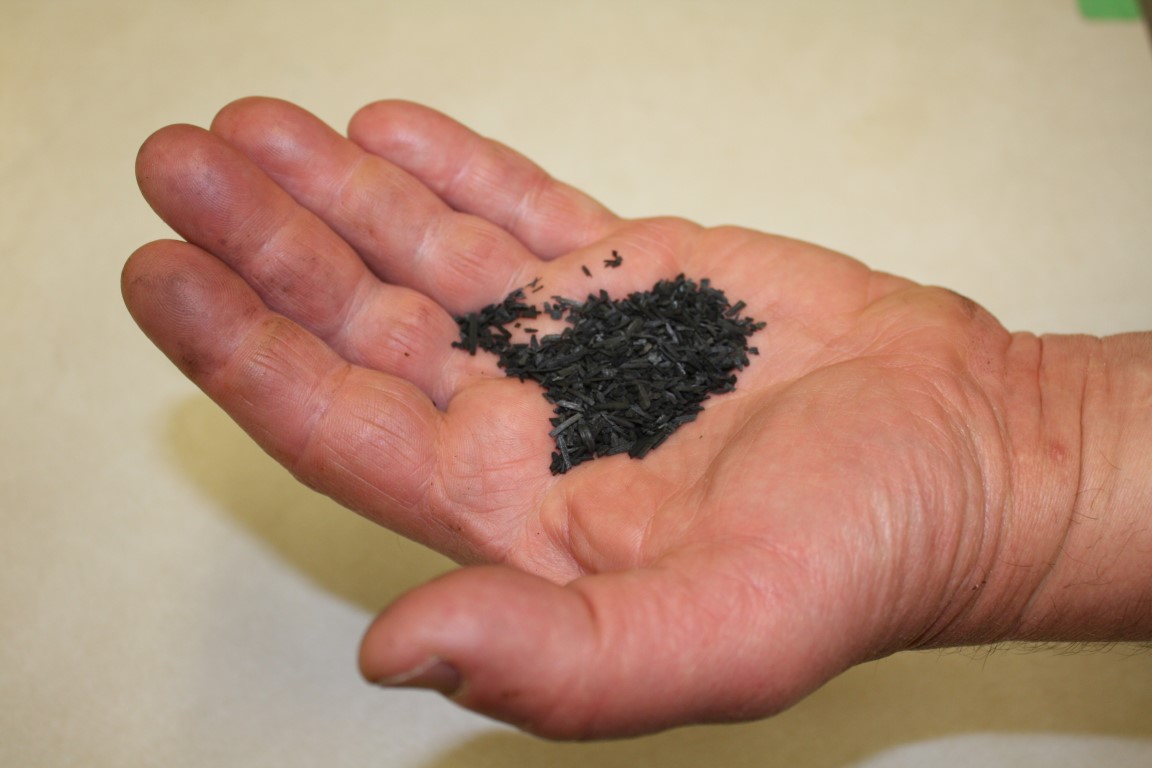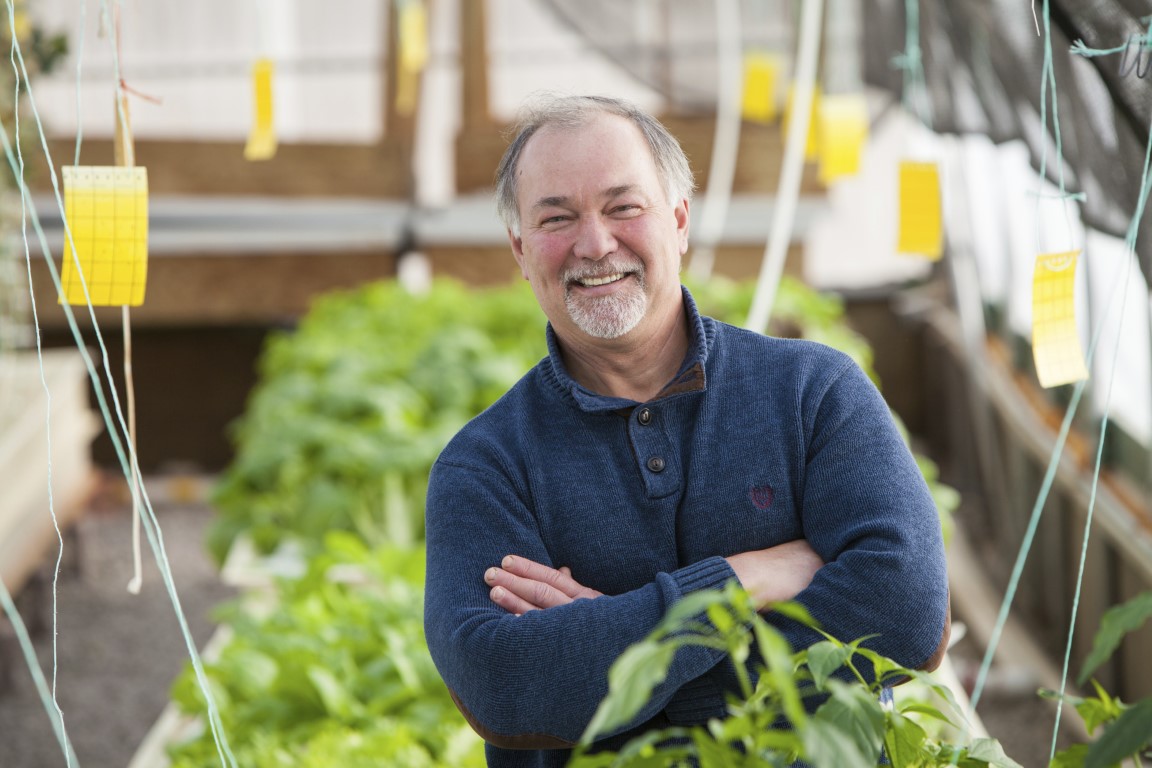
Biochar: it’s light, durable, readily accessible and could be a key to zero-waste food production in the world’s greenhouses and aquaponics systems. And a research project at Lethbridge College is testing it as a micro-nanofiltration system in aquaponics.
Biochar is a type of charcoal created by burning bamboo anaerobically (without the presence of oxygen.) Its highly porous surface both captures small particles in water and houses beneficial microbes that contribute to cleaning the water.
“Zero waste agriculture is the main goal, and this would have potential to treat grey water in animal husbandry, waste management and municipal water treatment,” says Dr. Nick Savidov, senior research scientist in Lethbridge College’s Aquaculture Centre of Excellence (ACE). “It even has potential to remove pathogenic bacteria to produce potable water.”
Savidov is the lead researcher on the $50,000, one-year applied research project that is designed to find a sustainable, cost-effective solution to a problem encountered by the project’s industry partner.

The company, 1722497 Alberta Ltd., operates a greenhouse in Aldersyde, using its own design for vertical growing towers to maximize use of greenhouse space in an aquaponics setting. Water containing fish effluent provides nutrition to the plants, which clean the water for the fish habitat, but solids in the water were clogging the roots of plants in the vertical towers.
In an effort to solve that problem, Savidov and the ACE team designed 20 “mini-systems” to test various amounts of biochar for its ability to capture micro- and nano-particles to improve water quality for both plants and fish.
The work is supported through a $25,000 cash contribution from the Natural Sciences and Engineering Research Council of Canada (NSERC) Engage grant program, which is matched by Alberta Innovates’ Campus Alberta Small Business Engagement Program (CASBE).
“We are pleased with the success of the biochar project and in the potential impact it will have for our industry partner,” says Dr. Kenny Corscadden, Lethbridge College’s Associate Vice President Research. “This is exactly the intent of NSERC Engage and Alberta Innovates CASBE funding — creating an opportunity for applied research to provide practical solutions to real world problems that help industry become more economically viable. In this case, there is potential to take the technology further along the commercialization path and we look forward to continued collaboration.”
The research partnership not only helps 1722497 Alberta Ltd. find solutions to improve its food production operations, but gives it verified scientific data to support the company’s efforts to produce the highest quality food locally and naturally.
“A lot of companies make claims, but this is third-party, verified data from a credible, leading team of researchers,” says Daniel Ronald, president and CEO of 1722497 Alberta Ltd.
The project uses biochar as a “polishing step” for water. A drum filter and coarse and fine foam pads can capture the bulk of primary solids 50 microns or larger, leaving biochar as a second step to remove smaller particles that have traditionally been expensive to remove.

The bamboo biochar was chosen because it is routinely manufactured as high quality, horticultural grade stock for the production of activated carbon. The small, light particles that are one to three millimetres long are highly stable and retain their shape over time even in water.
“This material has a total surface area of 250 to 300 metres square, or more than 3,000 square feet in just one gram of biochar,” says Savidov. A gram of biochar fits easily in the palm of one hand, and provides a surface area larger than a standard doubles tennis court.
The year-long research project began with a review of literature in August 2017, continued with design and construction of the mini-systems, and will continue through this summer with experiments using various amounts of biochar and various flow rates, and then conclude with the construction and testing of a pilot scale microfiltration unit.

The project has potential applications for waste management, closed-loop production systems like aquaponics, irrigation water treatment and food production. Biochar can be used year after year, and it does not need to be replaced because it retains its shape and porosity over time. The microfiltration requires no energy and is relatively inexpensive compared to other traditional methods. Biochar can also be used as a growing medium for greenhouse crop production as Dr. Savidov demonstrated in experiments he conducted at Crop Diversification Centre South in Brooks and Crop Diversification Centre North in Edmonton.
“That’s why we need applied research,” says Savidov. “It’s a very good opportunity to help industry to grow. We have a gap between academic research and application in industry. The college is very well positioned to close this gap.”
More information about applied research at Lethbridge College can be found on the Centre for Applied Research and Innovation’s web page.

LISTEN:
Dr. Nick Savidov, senior research scientist in Lethbridge College’s Aquaculture Centre of Excellence, discusses the filtration properties of biochar.